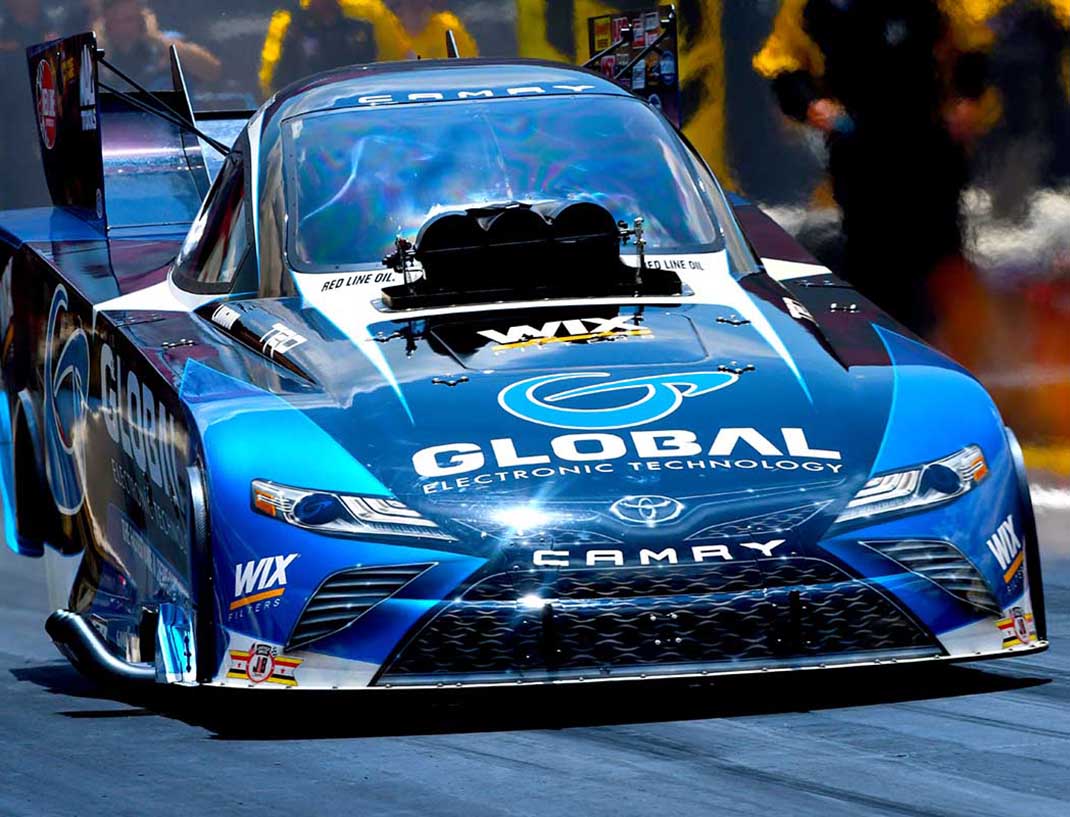Bob Tasca’s back-to-back victories during the month of June and a later runner-up finish signaled that Ford is back in the NHRA Funny Car class in an aggressive manner.
It’s proof of a subtle but seismic shift in drag racing. The Funny Car class is showing the automaker diversity that was once Pro Stock’s claim to fame.
It’s debatable which chicken-and-egg scenario has the correct sequence, but the four-make rivalry either reflects the NHRA’s upward trajectory in a static motorsports landscape or is the cause of it.
For Mark Rushbrook, global director of Ford Performance Motorsports, this reunion, which started in 2018, ended a three-year hiatus. A more promising return-on-investment potential — a successful “two-way tech transfer” between racing and production vehicles — caught his eye.
“The world is always changing, especially the auto industry and definitely the motorsports world. At the time we exited, we didn’t see some of the things in NHRA that we necessarily wanted to see. We did see some things in other areas where we could go race and apply our resources and get that two-way transfer in a different way,” Rushbrook said. “NHRA changed, for sure — in the media, the broadcast and viewership. There was a lot of compelling data that Bob and the NHRA brought to us to show how things had changed. Initially, we said, ‘We’ve made our decision. We’re good.’ But as we looked at the data more, it opened our eyes and made sense — and here we are.”
Rushbrook said Ford’s Funny Car participation follows the mantra of all car manufacturers: “We’ve got to go out and win races and championships.” However, he added, “Part of our mission is two-way tech transfer. That means taking the same engineering tools and ideas we apply to our road cars and using them in racing.”
For Laura Pierce, general manager of motorsports and asset management for Toyota Motor North America, it’s an effort that integrates engineering and marketing personnel with the sport’s drivers.
Steve Beahm looks at it as targeted resourcing for a finite budget that pencils out for Fiat Chrysler Automobiles (Dodge/Mopar) with the Don Schumacher Racing quartet that has produced four series championships. And, like Pierce, Chevrolet spokeswoman Judy Kouba Dominick says the Bowtie Brigade values the sales and B2C opportunities.
“We’re a car company. We truly love motorsports. We’re committed in that arena. We love being involved. We love the excitement of being part of a race team and seeing our product on the track,” Pierce said. “The Camry has been the best-selling sedan for Toyota for 22 of the last 23 years. Camry’s kind of our bread-and-butter of vehicles in North America, so we’re always excited to get it on track. It’s always been a big seller.
“So we wanted to showcase it in the series. In the future, would we consider another car? I’m sure we would, but it’s the one we started out with and we’re very excited to have it performing on the track,” Pierce added. “Other manufacturers are pulling out of sedans — right now it’s a very big truck and SUV market. But Toyota is very committed to sedans. There’s a market for it. We are launching a TRD version of the Camry, in the Avalon. It looks really cool, and it ties into the motorsports/TRD vibe.”
Toyota frames its Avalon advertising appeal through a racing filter, calling it “our latest creation to earn the TRD badge.” Ads read, “Toyota Racing Development (TRD) applies its track-tuning expertise to Avalon for greater handling, thrilling performance and bold styling. It’s time to crank up your commute and turn heads wherever you go.”
To continue reading, advance to the next page.
